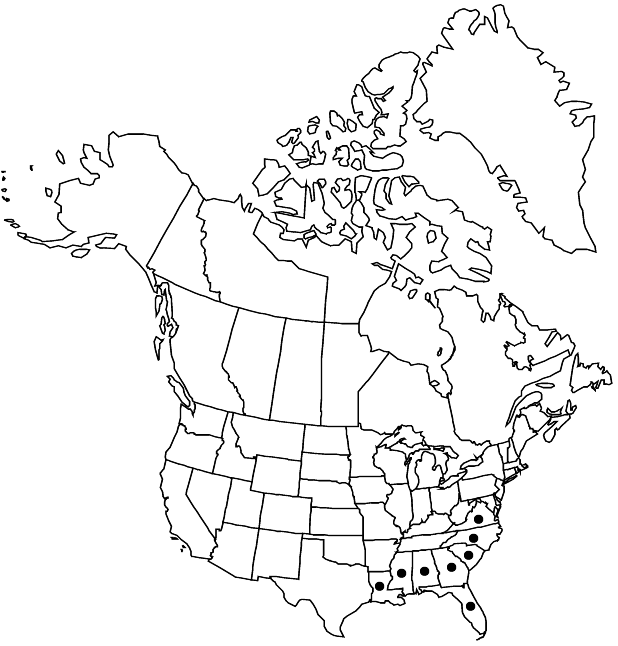Lyonia lucida
Dendrologie 2(1): 118. 1872,.
Shrubs, to 2.5 (–5) m. Stems erect to arching, usually sharply 3-angled. Leaves persistent; blade narrowly to widely elliptic, obovate, or slightly ovate, 1–8.5 (–10.5) × 0.5–4.5 (–5.5) cm, rigidly coriaceous, base attenuate or cuneate to rounded, margins entire, usually revolute, apex acuminate to acute, rarely rounded, surfaces scattered, multicellular, glandular short-headed-hairy, not lepidote, otherwise glabrous or hairy on midvein adaxially, intramarginal vein present. Inflorescences fascicles, developing from buds along distal portion of stems of previous year; bracts 1 per flower, linear-lanceolate, to 4 mm. Pedicels glandular-hairy, not lepidote. Flowers: calyx lobes 2–7.5 × 1–2 mm, glandular-hairy, not lepidote; corolla usually pink, sometimes white or red, cylindric (base swollen), 5–9 × 2–5 mm; filaments 3–5 mm, roughened, with 2 well-developed spurs. Capsules ovoid to ovoid-globose, 3–5 × 3–5 mm, apex slightly constricted, glabrous or short-headed-hairy; sutures usually remaining attached to adjacent valve; placentae central to nearly basal. 2n = 24.
Phenology: Flowering early spring–spring.
Habitat: Moist, acid, pine flatwoods and savannas, streamhead pocosins and baygalls, acid blackwater swamps, shrub bogs and peat-based pocosins, pond margins
Elevation: 0-200 m
Distribution

Ala., Fla., Ga., La., Miss., N.C., S.C., Va., West Indies (Cuba)
Discussion
Lyonia lucida is occasionally used as an ornamental; it is most closely related to L. mariana. The Cuban populations tend to have slightly longer and more densely hairy calyx lobes than do those of the southeastern United States.
Selected References
None.
Lower Taxa
"entire" is not a number.